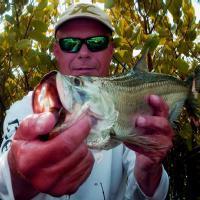The Angler Action Program (AAP), an ongoing service project of SGF since 2010, should be part of your personal fishing toolbox. It is the best opportunity to be directly involved in stock assessment research and habitat mapping, and it is a kick-ass personal log book. And it is yours for the taking, for free. After 6 years of growth and development, here are ten things you should know about your AAP:

-
AAP data was used in the most recent Florida spotted sea trout stock assessment. That’s our third species (others are snook and red drum). This will continue, and the list of species will expand. If you already log in the AAP, congratulate yourself – you are a difference maker.
-
One angler has already logged over 1000 trips. Pete Squibb in Southwest Florida is a champion. Not only does he log, but he actively uses his personal AAP data to improve his fishing trips.
-
The AAP has been presented directly to the US Congress. In 2015, SGF was part of an expert panel on data collection in Washington DC. Senators were able to hear the AAP story directly.
-
You can use the AAP anywhere in the world. Your personal and private (and free) AAP logbook allows you to enter ANY species, anywhere on the globe. It also allows you to capture vital trip data such as weather, tides, and more.
-
AAP data compares to MRIP. A study was published in Fisheries Journal (Dec 2016) that compares catch rates of snook, trout, and reds across the databases. When compared in regions that have high number of loggers, the AAP data matches MRIP data spot on.

Tarpon are a data-needy species.

Offshore species are included in iAngler.
-
AAP’s habitat mapping potential is real. Already, the program has been used by Palm Beach County three times to help map angler usage across restored habitats, which will help them secure funding for more important habitat projects.
-
Zero catch trips are still important. The trips when we don’t catch anything are still very critical, for researchers and your personal AAP logbook. So log them all.
-
NOAA sees the value in the AAP. The catch rate study mentioned in #5 was funded in part by NOAA. AAP success can and should help improve the MRIP stock assessment process.
-
There is NO OTHER WAY for you to voluntarily contribute your fishing data for scientific purposes. The AAP stands alone in this category. No other privately owned fishing app or database has come close.
-
We recommend using either the free mobile iAngler, or logging on the website www.angleraction.org. You can also use the apps Chesapeake catch or iGhoFish, which are slightly different but interchangeable.
Fishermen and women, there is no reason for you not to contribute to the AAP. It benefits our fisheries, it helps understand habitat use, it provides a powerful digital log book for you, and it is private and free.
It is time for YOU to step up, and sign up. Visit www.angleraction.org and create your free private profile today. Then download one of the free applications to your phone. All you have to do after that is go fishing and log, and watch your private fishing log book grow. Be a better angler, and contribute to a #brighterfishingfuture.
